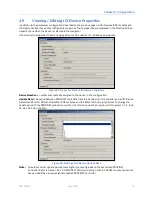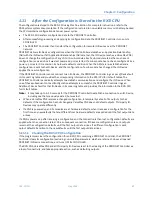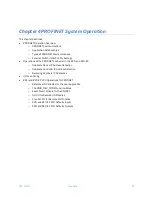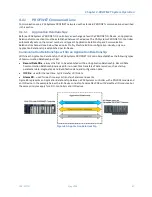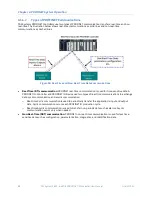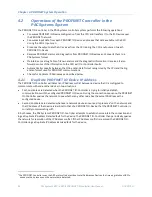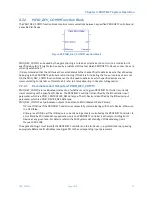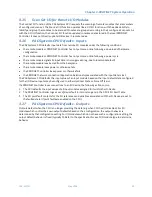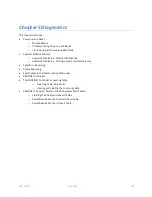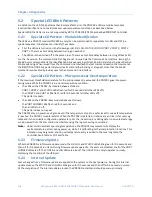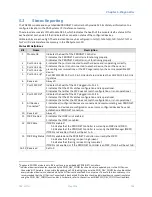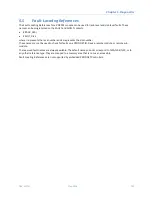
Chapter 4. PROFINET System Operation
92
PACSystems* RX3i & RSTi-EP PROFINET IO-Controller User Manual
GFK-2571N
4.3
I/O Scanning
In the PACSystems PROFINET network, multiple I/O cycles run asynchronously and independently. Figure 91
illustrates typical cycles in a system with an PACSystems CPU with a PROFINET Controller, and PNS modules
used as the head-end in IO-Devices. Cycles may be different for third-party devices.
Figure 91: Diagram of Multiple Asynchronous I/O Scans
•
PROFINET IO-Device Scan
: in Figure 91, each VersaMax PNS scans all the modules in its node as
quickly as possible. The PNS stores the input data gathered from each of the input modules in that
node into its internal memory. On each output scan, the PNS writes the output data from its internal
memory to the output modules in its node.
3
rd
party devices:
The conveyance of I/O data between an I/O module and the PROFINET IO network
is device dependent. Third party manufacturer documentation should be referred to for specifics for a
particular device.
•
PROFINET IO Production Cycle
: each PROFINET Controller in a CPU node and each IO-Device
publishes data from its internal memory onto the network at each scheduled PROFINET production
cycle (note: production cycles between IO-Controllers and IO-Devices are not synchronized, each
publishes at its configured update rate independently). The PROFINET Controller publishes output
data received from the CPU to each IO-Device, and the IO-Device publishes input data from its
memory to the PROFINET Controller.
•
PACSystems CPU Sweep
: the PACSystems CPU Sweep includes both an input scan and an output
scan. The CPU input scan retrieves the current input data being stored within the PROFINET
Controller. This input data is then available for use by the application logic. After the logic solution, the
CPU output scan writes the outputs to the PROFINET Controller.


